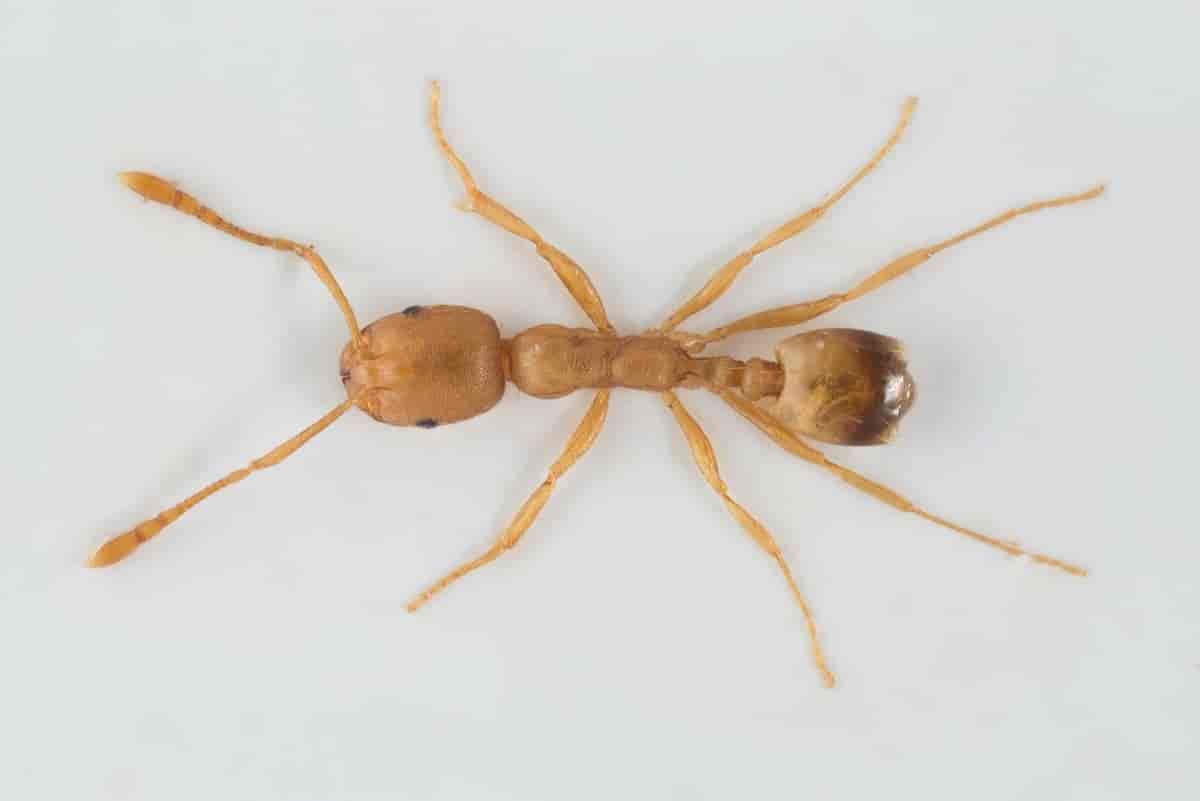FIND YOUR LOCAL
ARROW SERVICE CENTER
Monomorium pharaoni
The Pharaoh ant, one of the most challenging household and hospital ants to control, got its name from the mistaken idea that it was one of the ancient plagues of Egypt. Found worldwide, they are almost transparent, ranging from yellowish, light brown, or red, while their abdomen is of darker coloring. The ants have six legs and are only 1.5-2 mm long. While they have wings before mating, they are never able to fly.

| Color | Almost transparent, the body color ranges from yellowish or light brown to red, with the abdomen often darker to blackish |
| Legs | 6 |
| Shape | |
| Size | Length of 1.5 to 2 mm (0.06-0.08 inch) |
| Antennae | True |
Pharaoh ants will feed on various foods, including other insects, sweets, oils, and proteins. They release a pheromone to guide other ants from their colony to food sources.
While their exact origin is unknown, they are likely native to northern Africa and typically nest in warm, humid areas of your home near food sources, such as behind baseboards, wall voids, underneath floors, or behind large appliances.
Specialized baiting works best for getting rid of Pharaoh ants. Make sure to maintain the bait, replacing it every few days. Gel and liquid baits can be eaten and consumed by worker ants, resulting in the colony not being able to sustain itself with internal food sources. Worker ants will not feed on anything unless instructed by a scout ant; scout ants find the food and produce a trail pheromone which instructs the worker ant to feed on and carry the food back to the colony.
If your Pharaoh ant infestation continues, contact Arrow Exterminators for a professional pest control plan.
After you submit the information below, a trained professional in your area will get in touch within 1-2 business days to set up a date & time that is convenient for you.